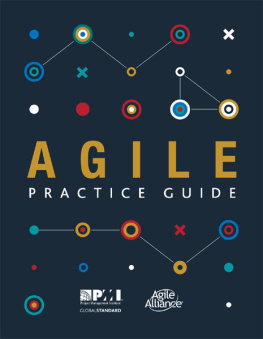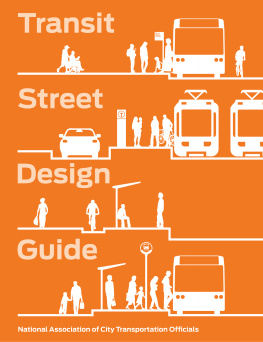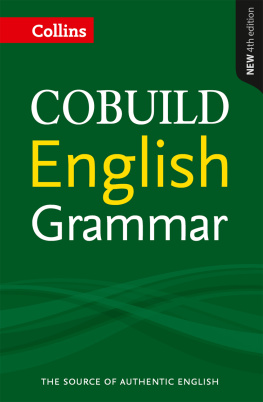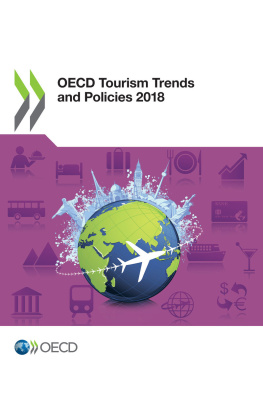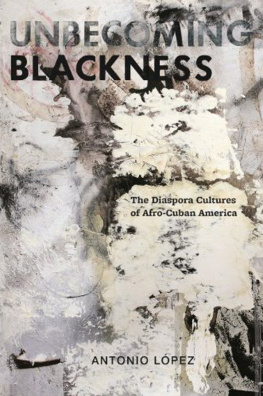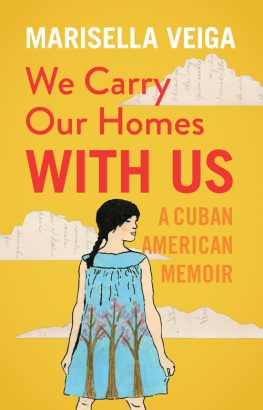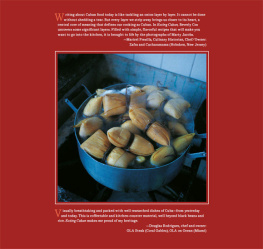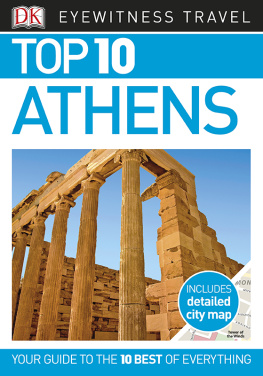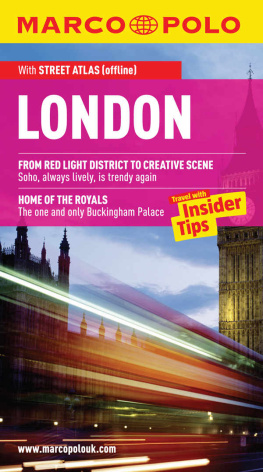coll. - Cuban American Theater
Here you can read online coll. - Cuban American Theater full text of the book (entire story) in english for free. Download pdf and epub, get meaning, cover and reviews about this ebook. year: 0, genre: Detective and thriller. Description of the work, (preface) as well as reviews are available. Best literature library LitArk.com created for fans of good reading and offers a wide selection of genres:
Romance novel
Science fiction
Adventure
Detective
Science
History
Home and family
Prose
Art
Politics
Computer
Non-fiction
Religion
Business
Children
Humor
Choose a favorite category and find really read worthwhile books. Enjoy immersion in the world of imagination, feel the emotions of the characters or learn something new for yourself, make an fascinating discovery.

- Book:Cuban American Theater
- Author:
- Genre:
- Year:0
- Rating:5 / 5
- Favourites:Add to favourites
- Your mark:
- 100
- 1
- 2
- 3
- 4
- 5
Cuban American Theater: summary, description and annotation
We offer to read an annotation, description, summary or preface (depends on what the author of the book "Cuban American Theater" wrote himself). If you haven't found the necessary information about the book — write in the comments, we will try to find it.
coll.: author's other books
Who wrote Cuban American Theater? Find out the surname, the name of the author of the book and a list of all author's works by series.
Cuban American Theater — read online for free the complete book (whole text) full work
Below is the text of the book, divided by pages. System saving the place of the last page read, allows you to conveniently read the book "Cuban American Theater" online for free, without having to search again every time where you left off. Put a bookmark, and you can go to the page where you finished reading at any time.
Font size:
Interval:
Bookmark:
edited by
Rodolfo J. Cortina


This volume is made possible through a grant from the National Endowment for the Arts, a federal agency.
The editor gratefully acknowledges the invaluable assistance of the following persons and institutions: for the preparation of the typescript and some textual editing, Mara Elena Cros, Mercedes Boffill, Soledad Daz, Sandra Bergeson and Catherine Barry; for financial support in terms of editing, Florida International Universitys Department of Modern Languages; for the financial support for translation, Arte Publico Press; for translation in record time, David L. Miller, and for other translation assistance and editing, Lynn E. Rice Cortina; for bibliographic suggestions and research, Nicols Kanellos, and for running down one of these items in New York, Alberto Moncada.
Arte Publico Press
University of Houston
Houston, Texas 77204-2090
Cover design by Mark Pin
Cuban American theater / edited by Rodolfo J. Cortina.
p. cm.
Contents: Martnez / by Leopoldo M. Hernndez Your better half / by Matas Montes Huidobro Birds without wings / by Renaldo Ferradas With all and for the good of all / by Uva Clavijo A little something to ease the pain / by Ren R. Alom Once upon a dream / by Miguel Gonzlez-Pando
ISBN 1-55885-020-1
1. American dramaCuban American authors. 2. Cuban American drama (Spanish)Translations into English. 3. Cuban AmericansDrama. I. Cortina, Rodolfo J.
PS628.C82C83 1991
812.5408097291dc20 | 91-9898 |
CIP |
The paper used in this publication meets the requirements of the American National Standard for Permanence of Paper for Printed Library Materials Z39.48-1984. 
Copyright 1991 by Rodolfo J. Cortina
Printed in the United States of America
For Olivia Augusta, whose very own play she writes, she directs, and she acts in the simultaneity of her experience.
Definition and Periodization
Cuban literature, Cuban exile literature, Cuban American literature: where does one end and the other one begin? It is in the midst of these thorny questions that the issue of definitions arises. In the case of the other U.S. Hispanic literatures such as that of Mexican, Mexican-American and Chicano literature, the demarcations are more clearly observed, though there are moments in the aftermath of the Mexican Revolution of 1910 that exile Mexican literature enters the U.S. Cuban literature has been traditionally written both on the island and abroad. The cases of Heredia, Avellaneda, Casals, Merlin, Mart, Florit, Carpentier, Sarduy, Arenas are but a few examples of this phenomenon. So then, if Cuban literature has often been written in exile, is there a difference between the literature of exile and that of the homeland? The answer, of course, is no, as long as the writer is considered both as a national author and as an exile after his or her death.
Cuban American literature, on the other hand, requires other considerations. For instance, the very nature of the context makes it difficult to make perfect analogies with other U.S. Hispanic literatures. Should Cuban American authors be born in the U.S.? Should they write only in English or, at least, in alternating codes? Should they write only about their immigrant experience? To some degree, whereas the questions are legitimate, they are not irrelevant, but impertinent. It seems to me that if Jos Mart lived in New York for fifteen years, he was to an extent a Cuban writer, an exile writer, but also a Cuban American writer. There is no law that forbids literary historians from including the same figure in several categories, or even in distinct groupings that are based on nationalist definitions, when the author lives a transnational reality.
It is my preference to view Cuban American authors as those who live in the U.S. and write about whatever topics may interest them (home country, new country, other places, peoples or things), and to place them in generational cohorts for ease of classification. Hence, in the case of theater, it would be better if we were to group authors in the following scheme: a Romantic generation, a Realist generation, a Naturalist generation, an Impressionist generation (corresponding to Modernismo), an Avant-Garde generation, an Existentialist generation, a Revolutionary generation, and a Postmodern generation. These groupings correspond, roughly, to the nineteenth century for the first three, turn of the century for the next group, and the twentieth century for the final four groups. The difference between both centuries lies in the fact that both Romanticism and a significant Cuban presence in the U.S. did not begin in 1800, but almost thirty years later. This general classificatory scheme also serves another very useful purpose: besides creating a mechanism for ordering the facts that we now know about the Cuban American writers whose persons and works have received some attention, it prepares the way for other newly researched facts to fit into the outline, or to demand changes in it.
Themes and Genres
In addition to the general issues of definition and periodization which have been addressed above, there are problems of genre which demand our attention. Perhaps some of the best work on Cuban theater history regarding the issue of genre has been in the major identification which has existed since Aristotles Poetics in dividing tragedy from comedy. The very nature of classifying across this gulf marked by laughter and tears is not in itself a problem; the notable exception is that theater that is not funny, becomes serious, and, therefore, more important. This, obviously has more to do with class prejudice than with anything else: the lords act tragically, the servants, comically.
Some scholars of French seventeenth century theater have very ingeniously availed themselves of approaches to communication theory designed as such by Roman Jakobson in order to elucidate the Aristotelian distinction even further. By identifying comedy with the emotive, poetic and conative functions, and farce with the referential, phatic and metalinguistic functions, they have managed to clarify not only the source of humor, but also the shape of its dramatic presentation. This is helpful to those who would continue the verticality of judgement, making comedy superior to farce in the general esthetic scale of value. Thus, one could conclude from these general exercises on dramatic genre definition, Cuban theater would be ranked as follows: serious theater, comedy, teatro frvolo, and teatro bufo, the latter being gradations of comedic drama. But what appears logical in the deductive realm is contradicted by an investigation of historical experience.
The origins of Cuban American theater are intimately tied to a tradition of theater in Cuba which marked Cuban theatrical tastes,
With a few exceptions that took place in the twenties and thirties when labor and other social topics were introduced to the stage, this has remained true since then, practically to this day. Cuban American serious theater during the Revolutionary period for the first twenty-five years struggled to survive. Meanwhile, the comic theater continues to blossom.
Font size:
Interval:
Bookmark:
Similar books «Cuban American Theater»
Look at similar books to Cuban American Theater. We have selected literature similar in name and meaning in the hope of providing readers with more options to find new, interesting, not yet read works.
Discussion, reviews of the book Cuban American Theater and just readers' own opinions. Leave your comments, write what you think about the work, its meaning or the main characters. Specify what exactly you liked and what you didn't like, and why you think so.

